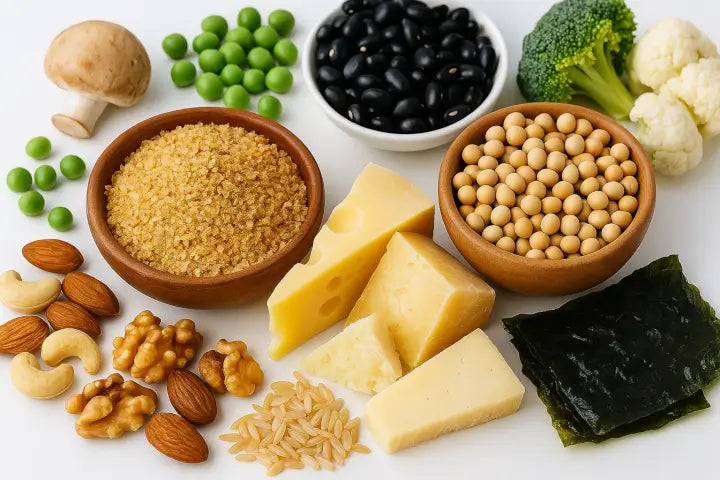How Spermidine Supports Cellular Health and Promotes Longevity

Introduction to Spermidine
Spermidine is a naturally occurring polyamine found in all eukaryotic cells, playing pivotal roles in cell growth, proliferation, and homeostasis. Originally isolated from semen in the early 20th century, its name derives from “sperm,” though its actions reach far beyond reproductive biology.
What Is Spermidine?
Chemically, spermidine belongs to a class of molecules called polyamines, which also include putrescine and spermine. These compounds feature multiple amine groups that facilitate interactions with DNA, RNA, and proteins-ultimately influencing gene expression, translation, and enzymatic activities. Spermidine’s three amine groups allow it to bind to negatively charged biomolecules, stabilizing structures and promoting cellular resilience.
Historically, spermidine was first crystallized from human semen in 1678 by Antoni van Leeuwenhoek, but its structural identification didn’t emerge until the early 1920s. Since then, decades of biochemical research have illuminated its roles in longevity pathways, stress response, and metabolic regulation. In short, spermidine acts like a molecular chaperone, guiding cells through challenging conditions and supporting the intricate dance of life at a microscopic scale.
Mechanisms of Action
One of the most fascinating mechanisms by which spermidine exerts its influence is autophagy induction. Autophagy-the process by which cells “self‐clean” damaged organelles and misfolded proteins-becomes less efficient with age. By enhancing autophagic flux, spermidine helps rejuvenate cellular machinery, fostering a tidy internal environment that supports longevity.
Beyond autophagy, spermidine modulates key signaling pathways such as mTOR (mechanistic target of rapamycin) and AMPK (AMP-activated protein kinase). Through fine‐tuned regulation of these pathways, it balances anabolic and catabolic processes, synchronizing energy production with nutrient availability. The net result is improved mitochondrial function, reduced oxidative stress, and bolstered stress resistance-hallmarks of healthy aging.
Health Benefits of Spermidine
Over the past decade, a growing body of literature has associated spermidine with a spectrum of health benefits. From cardiovascular wellness to neuroprotection, its multifaceted actions address some of today’s most pressing health concerns. Although human trials are still emerging, observational studies and animal models consistently point to positive outcomes.
Below is a concise overview of spermidine benefits, each supported by peer‐reviewed research:
- Autophagy Activation: Promotes cellular recycling processes, potentially extending healthspan and youthfulness.
- Cardiovascular Support: Improves endothelial function, reduces blood pressure, and attenuates arterial stiffness.
- Neuroprotective Effects: Guards against age‐related cognitive decline and supports memory retention.
- Metabolic Regulation: Enhances insulin sensitivity and lipid metabolism, aiding in healthy weight management.
- Anti‐Inflammatory Actions: Dampens chronic low‐grade inflammation linked to aging and metabolic disorders.
- Hair and Skin Health: Stimulates hair follicle function and promotes dermal cell renewal.
| Benefit | Primary Mechanism | Key Findings |
|---|---|---|
| Autophagy | mTOR inhibition, AMPK activation | Enhanced cellular cleanup in mice, improved markers of longevity |
| Cardiovascular | eNOS upregulation, reduced oxidative stress | Lower blood pressure and improved endothelial function |
| Neuroprotection | Reduced protein aggregation | Improved memory tests in aged rodents |
| Metabolic | Enhanced mitochondrial biogenesis | Better glucose tolerance and lipid profile |
Natural Sources and Spermidine Foods
Incorporating spermidine foods into daily meals is a straightforward way to support cellular health. While endogenous biosynthesis supplies a baseline level, dietary intake can significantly augment systemic levels. Many plant and animal products naturally concentrate spermidine, making a varied diet the simplest roadmap to benefit.
Below are some of the top spermidine‐rich foods:
- Aged Cheeses: Parmesan, cheddar, and others mature for months to accumulate polyamines.
- Soy Products: Natto, tofu, and tempeh are notable for their fermentation-driven boost.
- Whole Grains: Durum wheat, rice bran, and rye.
- Mushrooms: Particularly shiitake and enoki varieties.
- Legumes: Peas, lentils, and chickpeas.
- Seafood: Raw oysters and certain fish species contain moderate amounts.
| Food Item | Spermidine (mg per 100 g) |
|---|---|
| Parmesan Cheese | 49.0 |
| Natto | 35.5 |
| Durum Wheat Germ | 14.1 |
| Shiitake Mushrooms | 6.7 |
Conclusion
From its humble discovery to its current status as a hot topic in longevity research, spermidine stands out for its versatile biological roles and promising health benefits. Whether obtained through spermidine foods, leveraged via a spermidine supplement, or studied in cutting‐edge laboratories, this polyamine continues to unveil new facets of cellular renewal. Embracing a balanced diet rich in spermidine‐containing foods and staying informed through reputable scientific channels can help readers navigate this exciting frontier with confidence.
FAQs
What does spermidine do for the body?
Spermidine promotes autophagy, the cellular “cleanup” process that removes damaged organelles and proteins. By upregulating autophagic pathways and modulating mTOR and AMPK signaling, it supports cardiovascular health, neuroprotection, metabolic balance, and reduced inflammation - ultimately contributing to healthy aging and improved resilience.
What foods are high in spermidine?
Foods particularly rich in spermidine include aged cheeses (e.g., Parmesan), fermented soy products (e.g., natto), whole grains (e.g., durum wheat germ), legumes (e.g., peas, chickpeas), and certain mushrooms (e.g., shiitake). Incorporating a variety of these items into the diet can help boost natural spermidine intake.
Is spermidine made from sperm?
Despite its name, spermidine is not derived from sperm cells in commercial or dietary contexts. It was first identified in semen, which inspired the nomenclature, but modern production relies on plant‐based extracts and microbial fermentation techniques - making it vegan‐friendly and free from animal‐derived sperm.
What are the disadvantages of spermidine?
Spermidine is generally well tolerated, but potential disadvantages include mild gastrointestinal discomfort in sensitive individuals. Because rigorous long‐term human safety data are still accumulating, those taking multiple medications or with underlying health conditions should consult a healthcare professional. Additionally, variability in supplement quality underscores the importance of choosing products with third‐party verification.
